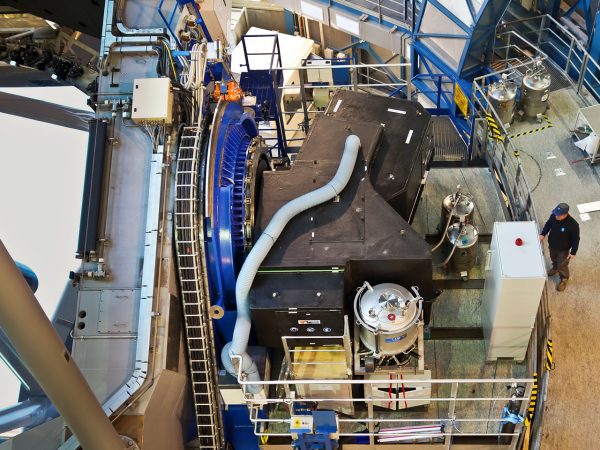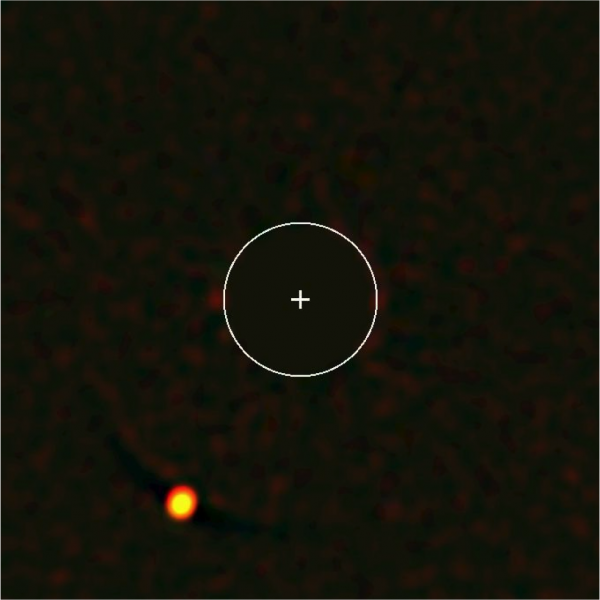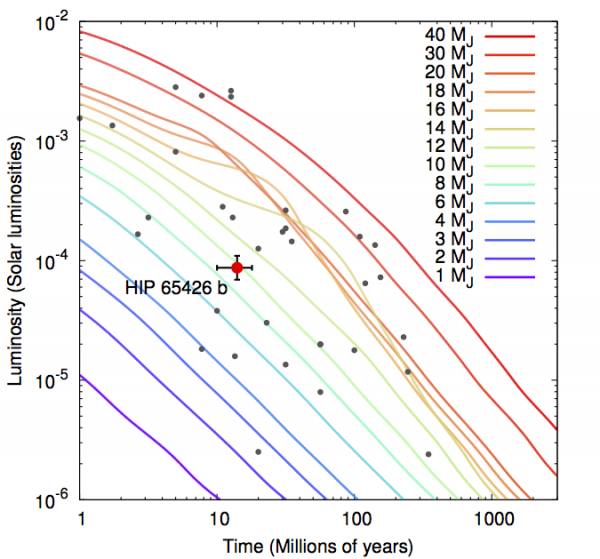First discovery of an exoplanet with SPHERE/VLT

An international team of astronomers, including PlanetS members and associates at the universities of Bern and Geneva, and at ETHZ , discovered an exoplanet by direct imaging using SPHERE, an instrument designed and developed by a consortium of 12 European institutes on the Very Large Telescope ESO, based in Chile. The instrument, which corrects in real time the terrestrial atmospheric turbulences and occult the light of the star, allows to take a real “photograph” of the exoplanet. This discovery is published in the journal Astronomy & Astrophysics this week.

The SPHERE instrument is shown shortly after it was installed on ESO’s VLT Unit Telescope 3. The instrument itself is the black box, located on the platform to one side of the telescope itself.
While more than 3600 exoplanets were discovered through indirect methods, only a handful of them could be observed by direct imaging. This is the first time that astronomers have been able to discover a planet directly on a “photograph” with the SPHERE instrument, an instrument designed and developed by a consortium of 12 European institutes, including members of PlanetS in Geneva and ETH Zurich. In order to take this kind of image, SPHERE is equipped with a deformable mirror that corrects 1200 times per second in real time the atmospheric turbulence and with a coronograph which allows to hide the light of the star and reveal that of the planet. SPHERE is able to detect the signal of a planet up to a million times lower than that of its host star.

Picture taken by SPHERE, showing the pla- net made visible after the star has been hidden by the coronograph. The circle corresponds to the orbit of Neptune. Credit ESO.
Installed on the VLT (Very Large Telescope) in Chile, SPHERE then discovered HIP65426b. “Once we detected the planet, our goal was to characterize it” said Christoph Mordasini from the University of Bern and MPIA Heidelberg associate, “we could then use our theoretical planet evolution models to derive its mass which we estimate to 6 to 12 times the mass of Jupiter”. HIP65426b is located at three times the Earth-Neptune distance from its star, and has a temperature of the order of 1200 degrees.

In the figure, HIP 65426 b (red symbol) and other directly imaged companions (black dots) are compared to predictions from the Bern Exoplanet Tracks (BEX) that are used by NCCR PlanetS researchers to interpret their observations. The lines show the luminosity as a function of time for planets with masses between 1 and 40 Jupiter masses. The comparison of the observed luminosity of HIP 65426 b with the models indicates that HIP 65426 b has a mass around 10 Jovian masses.
This planet already intrigues astronomers: its star is not surrounded by a disc of matter as is the case for most young planetary systems. Using HARPS, another Geneva-based design instrument, researchers realized that the HIP65426 was a young star and was turning very fast on itself, about 150 times faster than the Sun. Two elements that raise the question of the formation of the planet HIP65426b.
Two scenarios for a birth
Two scenarios are envisaged. The first supposes that the exoplanet would have formed in a disk of gas and dust and, once this disk dissipated, would have interacted with other planets to move to its distant orbit. The second suggests that the star and the planet would have formed at the same time but one being more massive, the other would not have been able to reach the end of its accretion of matter and would have become the planet HIP65426b. Both scenarios are now investigated by the planet formation theorists of PlanetS.
Link to the paper https://arxiv.org/abs/1707.01413
Categories: News
